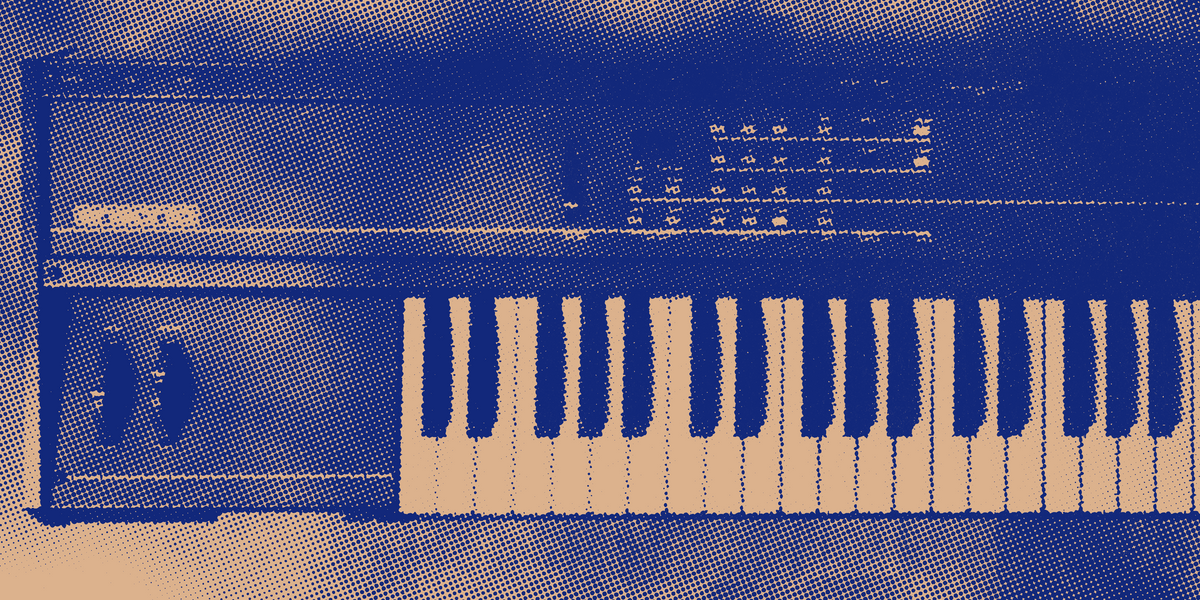A brief history of sampling in music (and music technology)
Sampling is an essential part of modern music production, but it has come a long way from the early days of exploration, resistance, and legal backlash. Here's a brief journey through 50 yesrs of sampling.

The concept of sampling, or reusing sound recordings, can be traced back to the mid-20th century, long before the advent of digital technology. The roots of sampling are found in the experimental music of the 1940s and 1950s, particularly in a genre known as musique concrète. This form of music was characterized by the use of recorded sounds as raw material, which were then manipulated and rearranged to create a composition. Pioneers like Pierre Schaeffer and Pierre Henry used tape recorders to cut, copy, and splice together sounds from a variety of sources, effectively creating the first samples.
In the 1960s, the practice of sampling was further developed by avant-garde and minimalist composers such as Steve Reich, who used tape loops to create phasing patterns, and Karlheinz Stockhausen, who incorporated electronically generated sounds and natural sounds into his compositions.
The Mellotron, introduced in the early 1960s, was one of the first keyboard instruments to use sampling. It played back tape recordings of real instruments, allowing musicians to mimic a variety of sounds, from strings to brass to choirs.
The Fairlight CMI Era
The Fairlight Computer Musical Instrument (CMI) was a groundbreaking development in the history of music. Introduced in 1979 by the Australian company Fairlight, the CMI was one of the earliest digital sampling synthesizers. It allowed musicians to record any sound, convert it into a digital format, and then play it back at different pitches on a keyboard. This was a revolutionary concept at the time, opening up a world of new sonic possibilities.
The Fairlight CMI was a complex and expensive machine, with a price tag that put it out of reach for most musicians. However, it was embraced by a number of high-profile artists in the early 1980s. Peter Gabriel used it extensively on his album "Peter Gabriel" (1980), Kate Bush used it to create the ethereal sounds on "Never for Ever" (1980), and Herbie Hancock showcased its capabilities on his hit single "Rockit" (1983).
The Fairlight CMI was not just a sampler, but a complete music production system, with a sequencer and a unique graphical user interface that allowed users to draw their own waveforms. It was also one of the first instruments to use a light pen and a cathode ray tube screen for manipulation of sounds. Despite its high cost and complexity, the Fairlight CMI had a profound influence on the music of the 1980s and set the stage for the digital music revolution that was to come.
The Rise of Digital Sampling
The advent of digital technology in the late 1970s and early 1980s marked a significant turning point in the history of sampling. The Fairlight CMI (Computer Musical Instrument), introduced in 1979, was one of the first digital sampling synthesizers. It allowed musicians to record a sound, digitize it, and play it back at different pitches on a keyboard. Despite its high cost, the Fairlight CMI was used by a number of high-profile artists, including Peter Gabriel, Kate Bush, and Herbie Hancock, and it had a profound influence on the music of the 1980s.
Moving on from the early adopter era of custom-built devices with enormous price tags, we enter the era of mass market manufacturing and the establishment of samplers (and the art of sampling) entertain the mainstream. Kicking off the 1980s right off the bat, E-mu released the E-mu Emulator in 1981, and followed it up across the decade with the E-mu SP-12 and then SP-1200 which would not only become iconic instruments in genres like hiphop in particular, but set the template alongside Akai's MPC for a general form factor and functionality that remains to this day (per the Roland SP404 or even Roland's awkward but successful era of Grooveboxes).
These devices allowed musicians to sample from a variety of sources, manipulate the samples, and sequence them into a song, all in one machine. They were particularly influential in the development of hip-hop, where producers used them to create complex beats from a collage of sampled drum breaks, funk grooves, and other sounds.
The rise of computer-based digital audio workstations (DAWs) in the 1990s, such as Pro Tools, further democratized the process of sampling. These software programs allowed anyone with a computer to record, sample, and produce music, leading to an explosion of creativity and the birth of new genres.
The rise of digital sampling marked a shift in the way music was produced and consumed. It allowed for a greater range of sounds and textures in music, and it opened up new possibilities for creativity and expression. However, it also raised new legal and ethical questions about the use of other people's recordings, which continue to be debated today.
Sampling in Hip-Hop and Electronic Music
Sampling has been a cornerstone of hip-hop and electronic music since their inception. In the late 1970s and early 1980s, hip-hop pioneers like Grandmaster Flash, Afrika Bambaataa, and the Bomb Squad (Public Enemy's production team) began using samplers to create complex beats and soundscapes from a collage of sampled drum breaks, funk grooves, and other sounds. This practice, known as "crate-digging," involved scouring through old vinyl records to find unique and obscure sounds to sample.
The introduction of affordable digital samplers like the E-mu SP-1200 and the Akai MPC (or the rackmount siblings like the Akai S950 and S2000) in the 1980s and 1990s further democratized the process of sampling in hip-hop. These machines became the backbone of hip-hop production, used by influential producers like Dr. Dre, J Dilla, and Madlib.
In electronic music, sampling was used to create new genres and push the boundaries of sound. House and techno producers sampled disco, soul, and funk records to create new dance tracks. Artists like The Prodigy and Fatboy Slim used sampling to create big beat, a genre characterized by its heavy breakbeats and synthesizer-generated loops. In the genre of ambient music, artists like Aphex Twin and Boards of Canada used samples to create complex, layered soundscapes.
And needless to say, the early era of Jungle was as much tied to the evolution of sampling as it was to source material from the Ultimate Breaks & Beats compilations, and the increased cultural diversity in the United Kingdom that brought new music, new records, and new genres to sample, arrange, and ultimately release.
Legal and Ethical Issues
The practice of sampling has also raised a number of legal and ethical issues. As sampling became more prevalent, so did lawsuits over copyright infringement. One of the most famous cases is the lawsuit against Biz Markie by Gilbert O'Sullivan, which resulted in Markie's album being pulled from shelves and significantly impacted the use of unlicensed samples in hip-hop.
The legal battles over sampling have led to a complex and often costly system of sample clearance, where artists must obtain permission and often pay a fee to the original copyright holder before they can use a sample. This has been criticized for stifling creativity and favoring established artists who can afford the clearance fees.
Ethically, the debate around sampling often centers on questions of originality and appropriation. Some argue that sampling is a form of plagiarism, while others see it as a legitimate and creative form of musical expression. This debate is particularly heated when it involves artists from different cultural or socioeconomic backgrounds, raising questions about cultural appropriation and economic exploitation.
Despite these challenges, sampling remains a vital part of modern music, continually evolving as artists, technology, and the law adapt to its ever-changing landscape.
Modern Sampling Techniques and Technology
The advent of digital audio workstations (DAWs) and software plugins has revolutionized the world of sampling. Tools like Ableton Live, Logic Pro, and FL Studio have made it possible for anyone with a computer to record, manipulate, and sequence samples, democratizing the process of music production.
Modern samplers and plugins offer a wide range of capabilities. They can stretch and pitch-shift samples, slice them into smaller segments, apply effects, and much more. Some samplers, like Native Instruments' Kontakt, can even simulate the performance characteristics of different instruments, allowing producers to create realistic-sounding parts from sampled sounds.
The internet has also had a profound impact on sampling. Online platforms like Splice and Loopmasters offer vast libraries of royalty-free samples, while websites like WhoSampled allow users to discover the sources of samples used in thousands of songs.
In addition, the rise of machine learning and artificial intelligence is opening up new possibilities for sampling. Algorithms can now analyze and categorize samples, making it easier for producers to find the perfect sound. AI can also generate its own sounds and melodies, blurring the line between sampling and original composition.
The Future of Sampling
As we look towards the future of sampling, it's clear that technology will continue to play a significant role. Advances in artificial intelligence and machine learning are already beginning to shape the next generation of sampling tools. Algorithms can now analyze and categorize samples, making it easier for producers to find the perfect sound. AI can also generate its own sounds and melodies, blurring the line between sampling and original composition.
In addition, the internet has made a virtually unlimited number of samples available at the click of a button. Websites and apps offer vast libraries of sounds, from vintage drum breaks to field recordings from around the world. This has democratized access to sampling, allowing anyone with a computer to create music.
However, as sampling becomes more widespread and accessible, it also raises new challenges. Legal and ethical issues around copyright and fair use continue to be a concern. As technology evolves, so too will the laws and norms governing its use.
In the future, we can expect to see more hybrid approaches to sampling, combining traditional techniques with new technologies. We may also see more collaboration between artists and AI, with machines not just providing sounds, but also contributing to the creative process. Whatever the future holds, it's clear that sampling will continue to be a vital part of music production, pushing the boundaries of what is possible and shaping the sound of music to come.
References
- Katz, M. (2004). Capturing Sound: How Technology Has Changed Music. University of California Press.
- Schloss, J. G. (2004). Making Beats: The Art of Sample-Based Hip-Hop. Wesleyan University Press.
- Milner, G. (2009). Perfecting Sound Forever: An Aural History of Recorded Music. Granta Books.
- Demers, J. T. (2006). Steal This Music: How Intellectual Property Law Affects Musical Creativity. University of Georgia Press.
- Harkins, P. (2010). Beautiful Monsters: Imagining the Classic in Musical Media. University of California Press.
- WhoSampled.com. (n.d.). Discover Music through Samples, Cover Songs and Remixes. Retrieved from https://www.whosampled.com/
- Splice.com. (n.d.). Royalty-Free Sounds & Rent-to-Own Plugins. Retrieved from https://splice.com/
- Loopmasters.com. (n.d.). The Best Sounds for Producers & Artists. Retrieved from https://www.loopmasters.com/
- Point Blank Music School. (n.d.). A History of Sampling w/ Chris Read (WhoSampled) at Point Blank London [Video]. YouTube. https://www.youtube.com/watch?v=SZGobMX9I48
- TED. (n.d.). How sampling transformed music | Mark Ronson [Video]. YouTube. https://www.youtube.com/watch?v=H3TF-hI7zKc
- Hip Hop Realm. (n.d.). Sampling Documentary [Video]. YouTube. https://www.youtube.com/watch?v=-HZOdRaeXmA
- Kyle Reid Music. (n.d.). The Dangerous Art Of Sampling Music [Video]. YouTube. https://www.youtube.com/watch?v=pFd7ygNSOhQ
- Firehouse SoundLabs. (n.d.). Early Documentary about Sampling (1988) [Video]. YouTube. https://www.youtube.com/watch?v=cu38AL4E7I4


